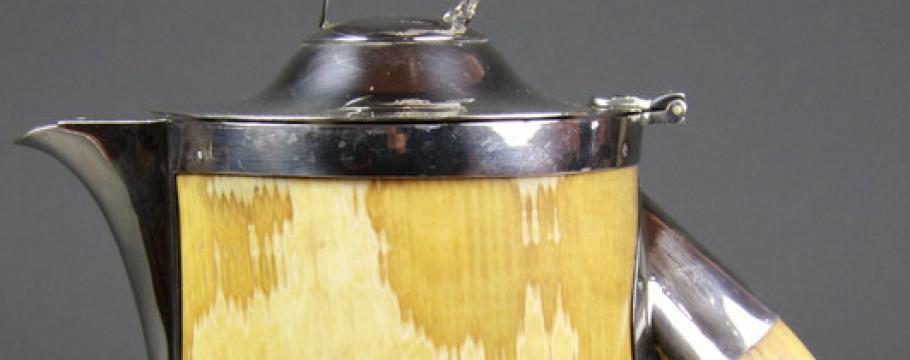
Bronzes and shipwreck pieces an auction highlight
Author: Richard Brewster | Posted: 4th September, 2013
Two magnificent Japanese bronze works from the late Meiji period (1869-1912) (both sourced from a Melbourne estate) and several 17th and 18th century Chinese shipwreck cargo pieces are highlights of Philips Auctions next decorative arts sale from noon on Sunday at 47 Glenferrie Road, Malvern.
One of the Japanese bronzes is a Tokyo School example of a young girl playing with her Japanese Chin dog.
Despite its oriental subject matter, the bronze has a strong western influence typical of the era – catering to western tastes with its realistic approach, smooth finish and sentimental Victorian subject matter.
The other Japanese bronze (also Tokyo School for export) features bronze pheasants and songbirds in a rustic tree. It is an imposing and quite dramatic piece with an ikebana quality to its structure.
The Chinese shipwreck cargo items are similar to the late Ming and early Qing (1640-1700) pieces found respectively on the Ca-Mau and Vung-Tau shipwrecks.
Shipwreck items number in the tens of thousands, with many officially claimed by the countries in whose waters the ships sank.
Sometimes, they turn up at auction – the Ca-Mau cargo was sold in 2007 by Sotheby’s in Amsterdam.
Philips Auctions has a cup and saucer from that sale but the other items were probably collected and traded by local fishermen who realised the financial value of the porcelain long before they were officially claimed.
Not all shipwreck pieces look like they have been underwater for a long time. Those packed in the middle of crates are less subject to the effects of seawater and sand abrasion than those on the outside and their glazes have been remarkably preserved.
The auction contains several ivory and silver plate pieces including a rare and exceptional pair of ivory and silver plate candlesticks and an unusual ivory, boar tusk and silver plate jug.
They belong to mathematician who has never before stepped inside an auction house and were left to him by a great aunt who lived in Malvern East.
The candlesticks are reminiscent of those made by Joseph Rodgers & Sons around 1900.
Photographs of the period show his storerooms filled with ivory (one has a family member alongside 2.5-metre long tusks) and the company was using 120 tonnes of ivory every year for its products.





